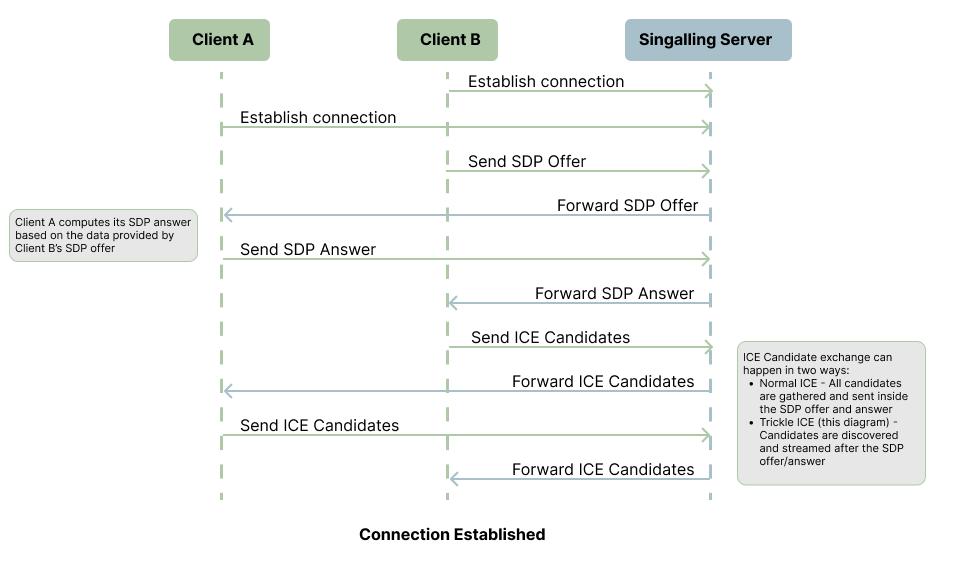Medium
1w
260

Image Credit: Medium
WebRTC Tutorial — Overview
- WebRTC can be preferred over HTTP or WebSockets depending on the specific use case.
- WebRTC allows for direct communication channels between peers, utilizing signaling servers for connection relay.
- SDP offers and answers contain essential information for media channel setup in WebRTC.
- STUN servers help clients discover their public IP, while TURN servers act as communication relays if direct peer-to-peer connections fail.
- ICE candidates provide information on connectivity options like host, public, and relay candidates for efficient connections.
- ICE candidates can be exchanged using Classic ICE or Trickle ICE methods to speed up connection setup.
- WebRTC Media Streams use RTP for audio/video exchange with encryption through SRTP/DTLS, allowing multiple tracks within a stream.
- Data Channels in WebRTC enable non-media data exchange, making them suitable for chat applications or file transfers.
- The article outlines the basics of WebRTC, from connection establishment to data exchange mechanisms like Media Streams and Data Channels.
- The next topic in the series will cover building a basic P2P web app in TypeScript and debugging tools for connection issues.
Read Full Article
15 Likes
For uninterrupted reading, download the app